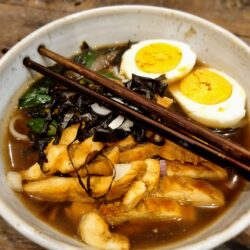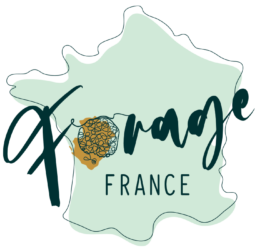| Bedstraw (Hedge) | The young shoots and leaves of cleavers bedstraw are perfectly edible. Bedstraw is like a hairless version of cleavers. |
| Ants | Ants are commonly consumed in many Asian, African, and Latin American countries. Some of the most popular types of edible ants are leaf-cutting, weaver, honey, and black ants. Have a distinct Lemony flavor. |
| Bamboo | Use young shoots from ground no higher than 30cm boil or steam, raw bamboo poisonous. |
| Bitter Dock | Young leaves are edible fresh or cooked. These leaves do have a bitter taste, especially the older they become. Some people will cook leaves in at least one change of water in order to reduce the bitterness. They can also be dried for later use. |
| Bitter Lettuce | Related to a cultivated lettuce, far to bitter to enjoy, but edible. |
| Blackberry | Steep Leaves for tea, Eat the berries there are 365 different varieties of blackberry all edible. |
| Broad bean | An escapee perhaps, as you would shop bought |
| Burdock | Burdock leaves, stalks and roots are edible. Roots combined with dandelion for a syrup. |
| Cinquefoil | Young shoots and leaves of cinquefoil are edible in salads or cooked as a pot herb. |
| Cleavers | AKA ‘Sticky Willy & Goose Grass’ eat the young tips. It has a pea flavour. |
| Clover | Leaves in small amounts in large amounts poisonous. |
| Cow Parsley | All airborne parts of the cow parsley plant are edible, with a flavour sharper than garden chervil and described as grassy parsley with a hint of licorice or aniseed. The plant is invasive and spreads easily along roads, and the edges of woods and fields, so it is not cultivated but instead foraged in the wild from February to November. However extreme caution is advised when foraging cow parsley because it is easily confused with other species of the Apiaceae family, such as the deadly poisonous hemlock, hemlock water-dropwort and fool’s parsley. Because the plant’s flavour is considered unremarkable and the risk is great, foraging cow parsley in the wild is usually strongly discouraged. |
| Dandelion | Dandelion is probably one of the most common and recognisable varieties of edible weeds and it’s also very versatile. The yellow petals from the dandelion flower and the leaves can be eaten in salad, and the leaves can also be cooked and eaten like spinach. Also coffee from the dried roots, salad from the leaves and wine from the flowers. |
| Dead Nettle/Archangel | Purple dead nettle is not only a wild edible green, but a highly nutritious superfood. The leaves are edible, with the purple tops being even a little sweet. Since the leaves are relatively fuzzy, they are better used as an herb garnish or mixed with other greens in recipes, rather than being the star of the show. |
| Eldar Tree | Florets Used for tempura or for “champagne” Berries used for wine. |
| Fleabane | Aside for being used to attract pollinators, fleabane is a known wild edible. Leaves of fleabane are cooked (they can be eaten raw, but cooking will remove the small hairs on the leaves and stems) and served along other greens. Sources claim the leaves taste similar to spinach. |
| Fools Parsley | Poisonous, easily confused with other members of the carrot family. |
| Grape Vine | Grapes for eating/wine/syrup Leaves for stuffing |
| Hawkbit | Member of the dandelion tribe within the sunflower family, commonly known as hawkbits. Their English name derives from the mediaeval belief that hawks ate the plant to improve their eyesight. Use the same as dandelion. |
| Herb Robert | Herb-robert was traditionally used as an antiseptic, as well as to treat stomach upset and nosebleeds. Its leaves are edible and used by some to make tea. They have also been used crushed and rubbed on the skin as an insect repellent. |
| Holly Hock | Hollyhock is completely edible – leaves, roots, flowers, seeds, common in many cottage gardens. It’s a valuable medicinal plant too and can be use in natural homemade skin care. |
| Hops | Hops can be eaten; the young shoots of the vine are edible and can be cooked like asparagus. Hops may be used in herbal medicine in a way similar to valerian, as a treatment for anxiety, restlessness, and insomnia. |
| Iris Root | Orris Root, used as a flavour/scent fixative in the perfume industry and in Gin making. |
| Italian Thistle | The leaves are edible but don’t even bother trying to cut off the spines. That’s too labor intense. Just strip the green off the leaf leaving the very edible midrib. Rub the “wool” off and enjoy, raw or cooked. |
| Juniper | Juniper berries have a strong, bitter, slightly peppery flavour and gritty texture. Used as a botanical to flavour Gin. Fantastic flavouring for curing all types of meat. |
| Lavender | Use for cakes, syrup, or as an aromatic |
| Lilac Tree | Use flowers to make a country wine. Sugar dehydrated with lilac. |
| Lungwort | The leaves can be consumed raw or cooked and have a somewhat mild, yet pleasant taste. The thick leaf has a mucilaginous texture. Leaves can be added to salads, and they go quite well with eggs. Flowers are edible and the taproots were once eaten by Inuit. |
| Mouse Ear Hawkweed | The Mouse-ear differs from all other milky plants of this class, in its juice being less bitter and more astringent, and on account of this astringency, it was much employed as a medicine in the Middle Ages under the name of Auricula muris, from which the popular name is taken. It has sudorific, tonic and expectorant properties, and is considered a good remedy for whooping cough (for which, indeed, it has been regarded as a specific) and all affections of the lungs. The infusion of the whole herb is employed, made by pouring 1 pint of boiling water on 1 OZ. of the dried herb. This is well sweetened with honey and taken in wineglassful doses. |
| Oregano | Use as you would shop bought |
| Oxeye Daisy | Use as you would Daisy |
| Pine Needles | Pine Needles – Added to boiling water makes a great vitamin C packed hot drink. |
| Poppy | Common Poppy is poisonous, only the seeds of the opium poppy is edible. |
| Raspberries | As you would shop bought |
| Ribwort Plantain | The unopened flower heads can be eaten raw and have a taste reminiscent of raw button mushrooms. The leaves are edible, but are bitter and it is best to remove the thick veins. They can be dehydrated to create a stock. The seeds can be ground into a flour or cooked. |
| Rose Flowers | Edible, useful in making rose water, flavouring cakes, desserts and Gin |
| Snails | Make sure to harvest them from vegetation that has not been treated with herbicides or pesticides. They need to be purged prior to eating. |
| Sorrel (Wood) | Flowers and leaves edible, taste like green apple peel. Can be confused with clover. |
| Southern Daisy | AKA ‘Bruise wort’ fresh leaves will soothe wounds and help healing. Daisy. The ordinary daisy (Bellis perennis) that you see in lawns is an edible flower. Flower buds and young leaves can be added to salads or eaten in sandwiches. They can be used as an ingredient of soups, pickled as a susbstitute for capers and used to make wine. |
| Sow Thistle | The best part of the plant is the young leaves, raw or cooked. They can be added to salads, cooked like spinach or used in soups etc. You can also use the stems, cooked like asparagus or rhubarb. The milky sap has been used as a chewing gum by the Maoris of New Zealand. |
| Speedwell | Traditionally used as a substitute for tea, speedwell nearly went extinct in Victorian England as it was used to alleviate the symptoms of gout. |
| Violet | Both the leaves and flowers, contain high amounts of vitamin C and vitamin A. The edible violet plant can be used to make syrups, brew teas, and in baked desserts. |
| Wild Fennel | As you would shop bought, invasive so collect freely. |
| Wild Strawberries | As you would shop bought, tasteless strawberries are a different Indian variety, native ones are simply delicious |
| Wisteria | Only the flowers are edible. |
| Yarrow | A good insect repellant. Yarrow has a strong licorice-like scent and a mildly sweet flavor that’s similar to tarragon. This entire plant is edible, but its leaves and flowers are especially popular to use in recipes. They can be dried and used as a spice. But, fresh flowers and leaves are also great for salads, soups, and stews. |
| Cowslip | Member of the primrose family. Has a sedative effect, make tea from the dried flowers, roots can be used to help ease a cough if made into tea. Flowers make an excellent country wine. |
| Lords and Ladies AKA Cuckoo-pint (poisonous/harmful) | Poisonous, but included here for the easy mistake of confusing it with Sorrel |
| Walnut | Crack open, eat if white, discard if brown/black. |
| Garlic Mustard / Jack by the hedge | Garlic mustard is edible and should be harvested when young. The roots taste much like horseradish and the leaves are bitter when mature. The first year plant is a rosette, and its leaves can be harvested year-round. |
| Stinging Nettle | The leaves are edible at any stage of the plants’ growth. Cooking or drying them denatures the sting. They are nice and tender earlier in the season when they’re young. If they have already grown flowers and seeds, they’re still perfectly edible – just pick the smaller leaves near the top |












































